Auto dealerships face increasing financial pressures, especially Buy Here Pay Here (BHPH) dealers, who often contend with high-interest rates and inventory costs. This article outlines 10 financing options that can help dealerships manage cash flow, fund inventory, and support growth. Here's a quick summary of what's covered:
Each option has its pros and cons, with varying interest rates, approval requirements, and repayment terms. For BHPH dealers, selling loan portfolios via platforms like Debexpert can provide immediate cash to alleviate financial strain.
Quick Comparison:
| Financing Option | Key Benefit | Interest Rates | Funding Speed | Ideal For |
|---|---|---|---|---|
| Floor Plan Financing | Pay as vehicles sell | Variable | Moderate | Inventory management |
| Working Capital Loans | Covers operational costs | Risk-based | Moderate to fast | Day-to-day expenses |
| SBA Loans | Low rates, long terms | Prime + markup | Slow (weeks/months) | Expansion, property purchases |
| Equipment Financing | Funds for dealership equipment | Customizable | Moderate | Equipment purchases |
| Inventory Credit Lines | Revolving credit for inventory | Higher rates | Moderate | Inventory funding |
| Alternative Financing | Subprime lending programs | Higher rates | Fast | BHPH dealerships |
| Online Lending Platforms | Digital application process | Higher rates | Fast | Quick funding needs |
| Peer-to-Peer Lending | Investor-backed loans | Variable | Varies | Non-traditional financing |
| Short-Term Business Loans | Fast funding for urgent needs | Risk-based | Fast | Immediate cash flow gaps |
| Lines of Credit | Flexible access to funds | Variable | Moderate | General cash flow management |
This guide helps you weigh your options based on your dealership's financial situation and goals.
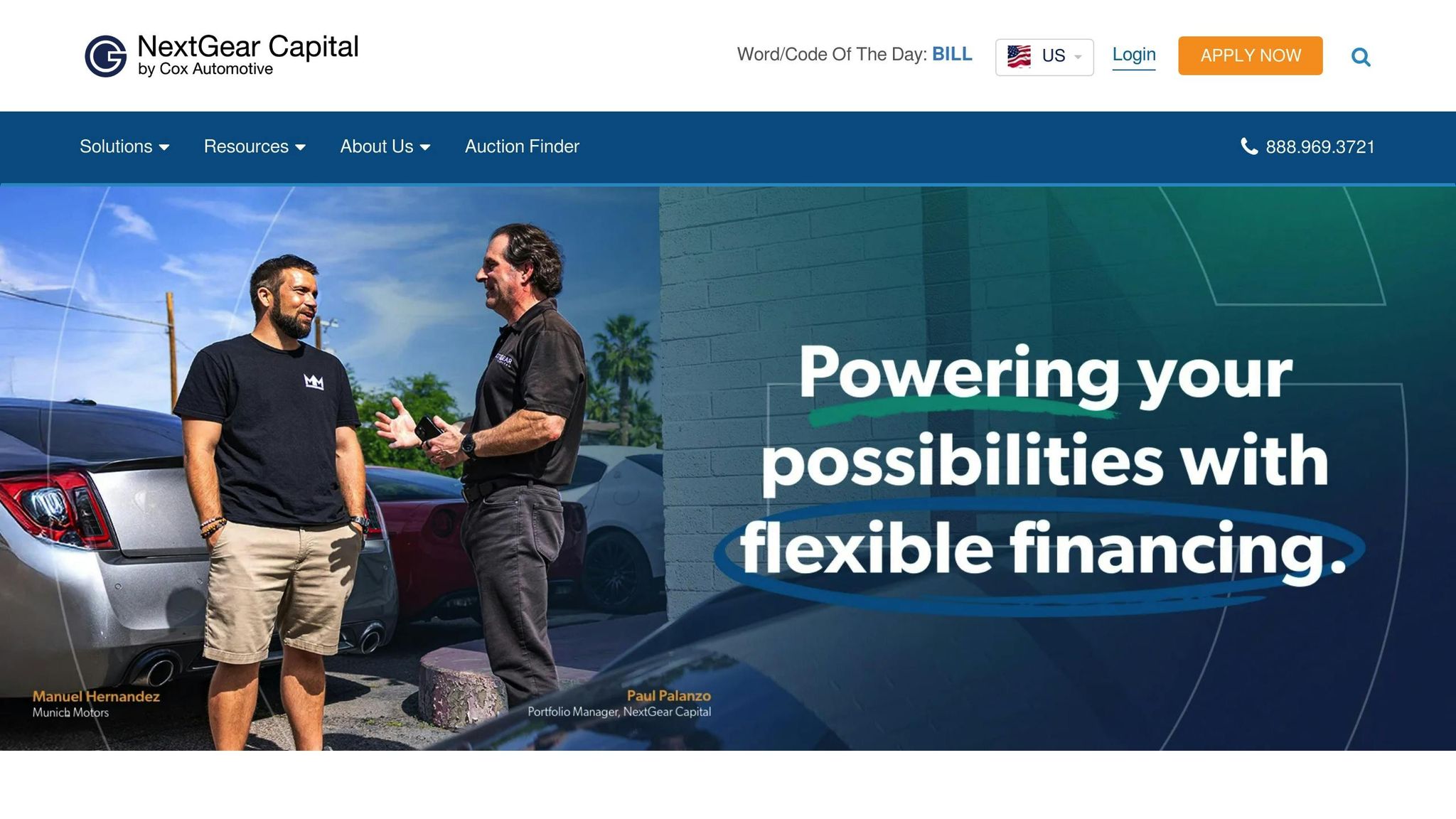
NextGear Capital provides a floor plan financing solution designed to help dealers manage their inventory without tying up their cash. By allowing dealers to repay loans as vehicles are sold, this approach supports liquidity while adapting to the natural cash flow of the business. Instead of rigid payment terms, NextGear Capital uses a tiered pricing model based on the purchase price of each vehicle, offering a more tailored and cost-effective financing option.
With NextGear Capital, dealers benefit from a tiered pricing system, where floor plan fees are calculated based on the purchase price of individual vehicles rather than applying a flat rate to all inventory. This strategy has helped dealers reduce their flooring costs by as much as 65%.
NextGear Capital’s Flex Pricing structure gives dealers the flexibility to defer payments on principal, floor plan advance fees, and interest until a vehicle is sold or an extension is arranged. This repayment model aligns with the sales cycle, offering dealers added financial flexibility.
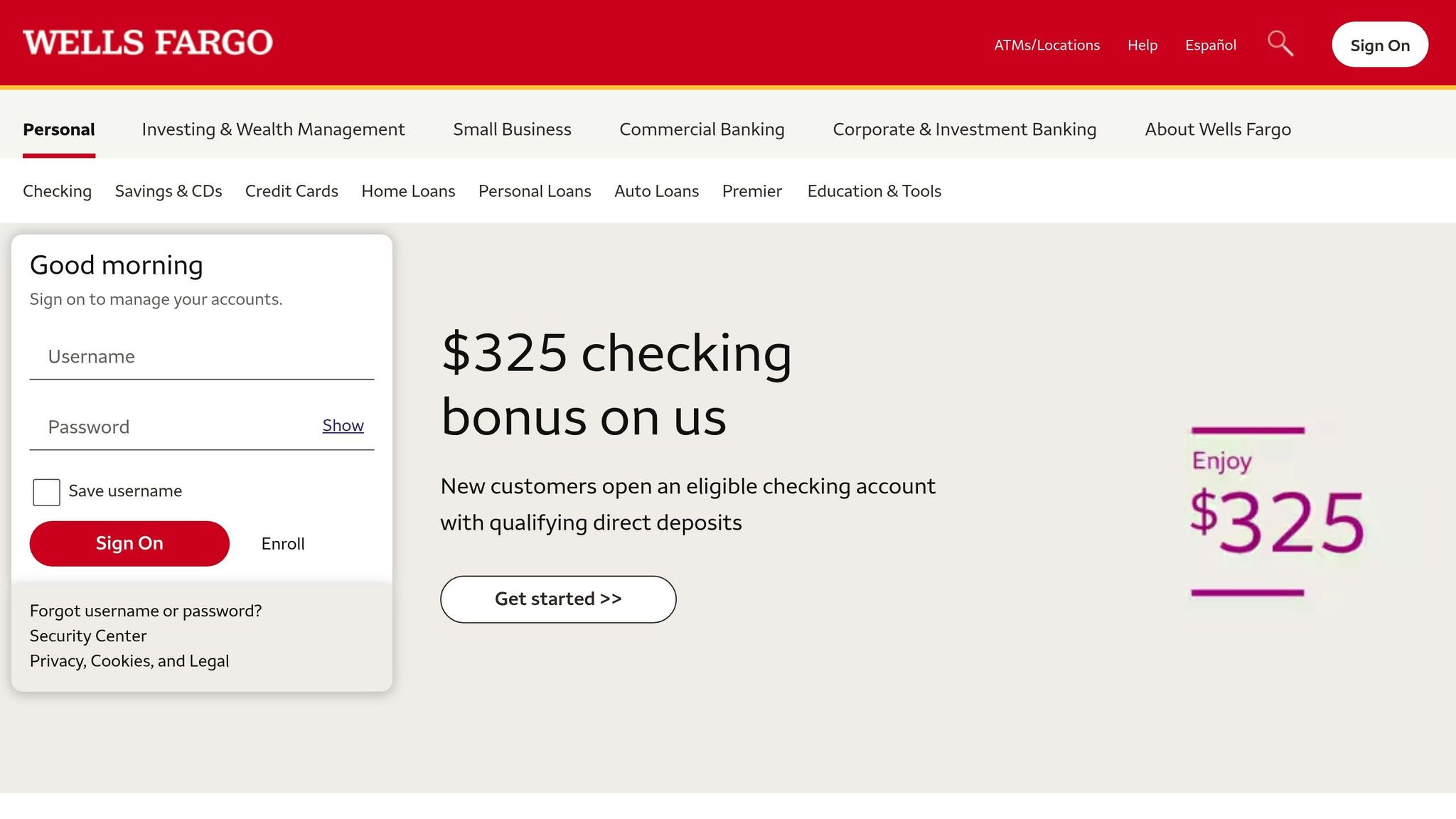
Wells Fargo provides working capital loans tailored for auto dealers to help manage everyday cash flow needs like payroll, operational expenses, or unexpected costs. Unlike floor plan financing, these loans aren't tied to inventory, giving dealers more flexibility in how they use the funds.
The interest rates depend on several factors, including the dealer's credit history, overall business performance, and other risk-related considerations. Wells Fargo uses a risk-based pricing model to determine the final rate.
These loans come with flexible repayment plans designed to align with the dealer's business cycles. This setup allows for predictable monthly payments, with the ability to adjust for seasonal sales patterns.
To qualify, auto dealers typically need to show a stable operating history and strong financial management. Required documentation includes financial statements, tax returns, and dealer licensing paperwork.
Once all necessary documents are submitted, Wells Fargo processes applications promptly. Dealers with an existing banking relationship may benefit from a faster, more streamlined process. Throughout the review and approval stages, the bank keeps applicants updated. This loan option focuses on supporting cash flow management and works well alongside other financing tools that are inventory-based.

SBA loans offer a way for dealerships to secure government-backed financing with lower interest rates compared to traditional loans. These loans can be used for a variety of purposes, such as expanding operations, purchasing property, or acquiring a dealership. By guaranteeing a portion of the loan, the Small Business Administration reduces the risk for lenders, making it easier for eligible dealerships to access funding. Here's a closer look at the key aspects of SBA loans, including interest rates, repayment terms, qualification requirements, and funding timelines.
The interest rates on SBA loans are tied to the Prime Rate and include an additional variable markup based on the loan's size and term length. This setup often results in borrowing costs that are more competitive than those offered by many other financing options.
Repayment terms are tailored to the purpose of the loan:
SBA loans come with stricter qualification standards compared to some other types of financing, but these requirements often lead to better loan terms. Dealerships seeking SBA loans generally need to provide:
The approval process for SBA loans tends to take longer than for conventional loans due to the additional layers of review involved. Depending on the complexity of the application and the quality of the submitted documentation, the process can range from several weeks to a few months. Dealerships with well-prepared financial records and clear business plans are more likely to experience a smoother and faster approval process.
Ally Financial provides financing solutions for new equipment tailored specifically for auto dealerships. What sets Ally apart is its ability to bundle multiple lending needs - such as equipment, real estate, and working capital loans - into one streamlined process. This simplifies the borrowing experience and offers dealerships the convenience of managing their financing needs through a single lender, which can help build stronger banking relationships over time.
Ally labels its equipment financing rates as "competitive" within the industry, though exact rate details aren’t disclosed online. Dealers can choose between fixed and floating rate options, depending on their preferences. Since Ally customizes rates based on individual qualifications and market conditions, dealerships need to contact the company directly for personalized quotes. This flexibility in rate structures is paired with repayment options designed to adapt to various business needs.
Repayment terms for Ally’s equipment financing are designed to be flexible, offering varied amortization schedules and payment structures similar to their real estate loan offerings. Equipment financing is treated separately from inventory financing, with specific terms and qualifications outlined in written agreements tailored to each dealership’s unique situation.
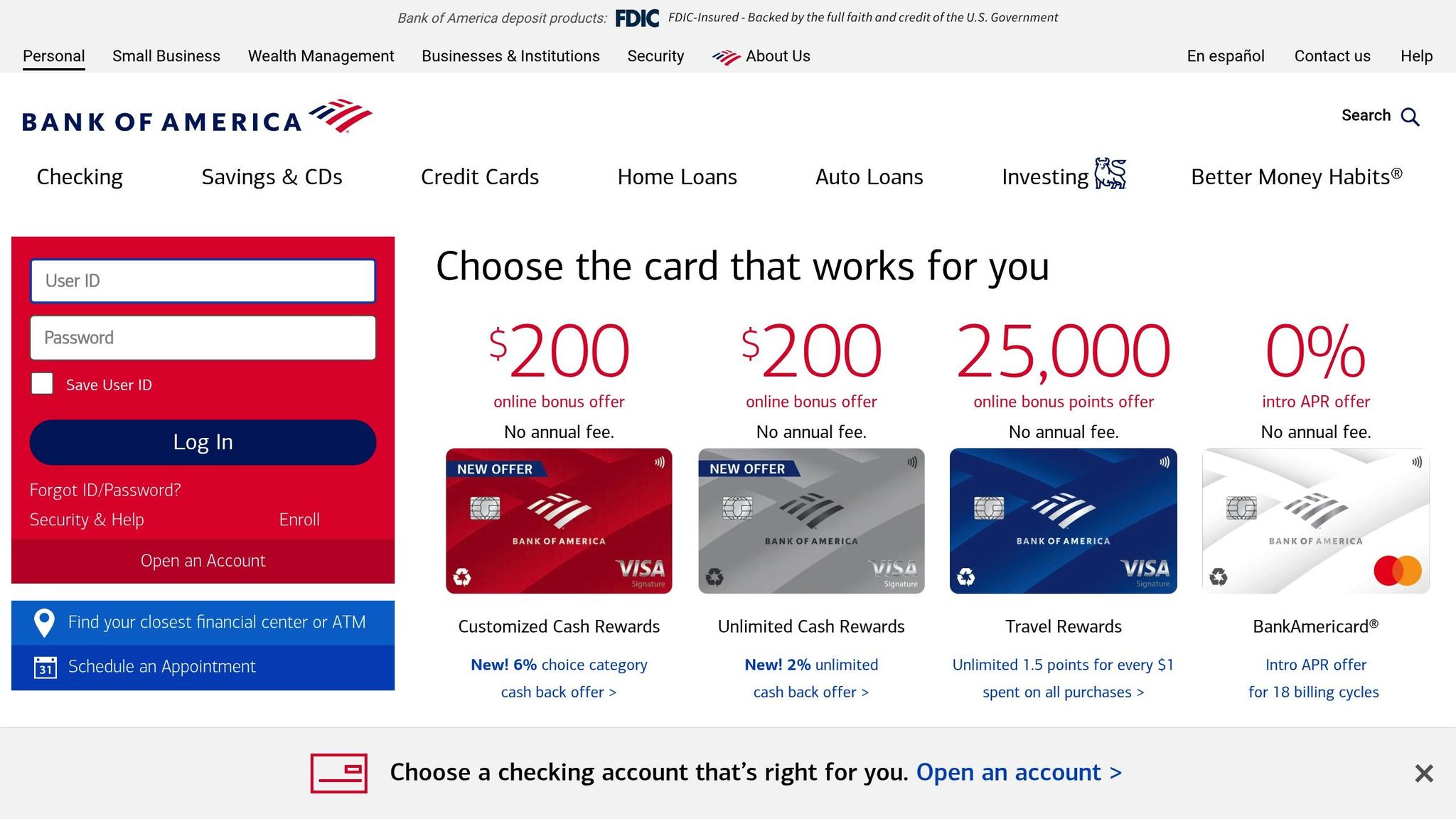
Bank of America provides inventory credit lines specifically tailored for auto dealerships, helping them manage cash flow more effectively. These revolving credit lines allow dealerships to finance vehicle purchases by using their existing inventory as collateral. Repayments are directly tied to vehicle sales, making this a flexible option that aligns with the natural sales cycle of the business.
This type of financing works well alongside other tools, offering dealerships a way to tap into their inventory to maintain liquidity and keep operations running smoothly.
For details on interest rates, repayment terms, eligibility requirements, and funding timelines, reach out directly to Bank of America. These factors can vary depending on the dealership's specific profile.
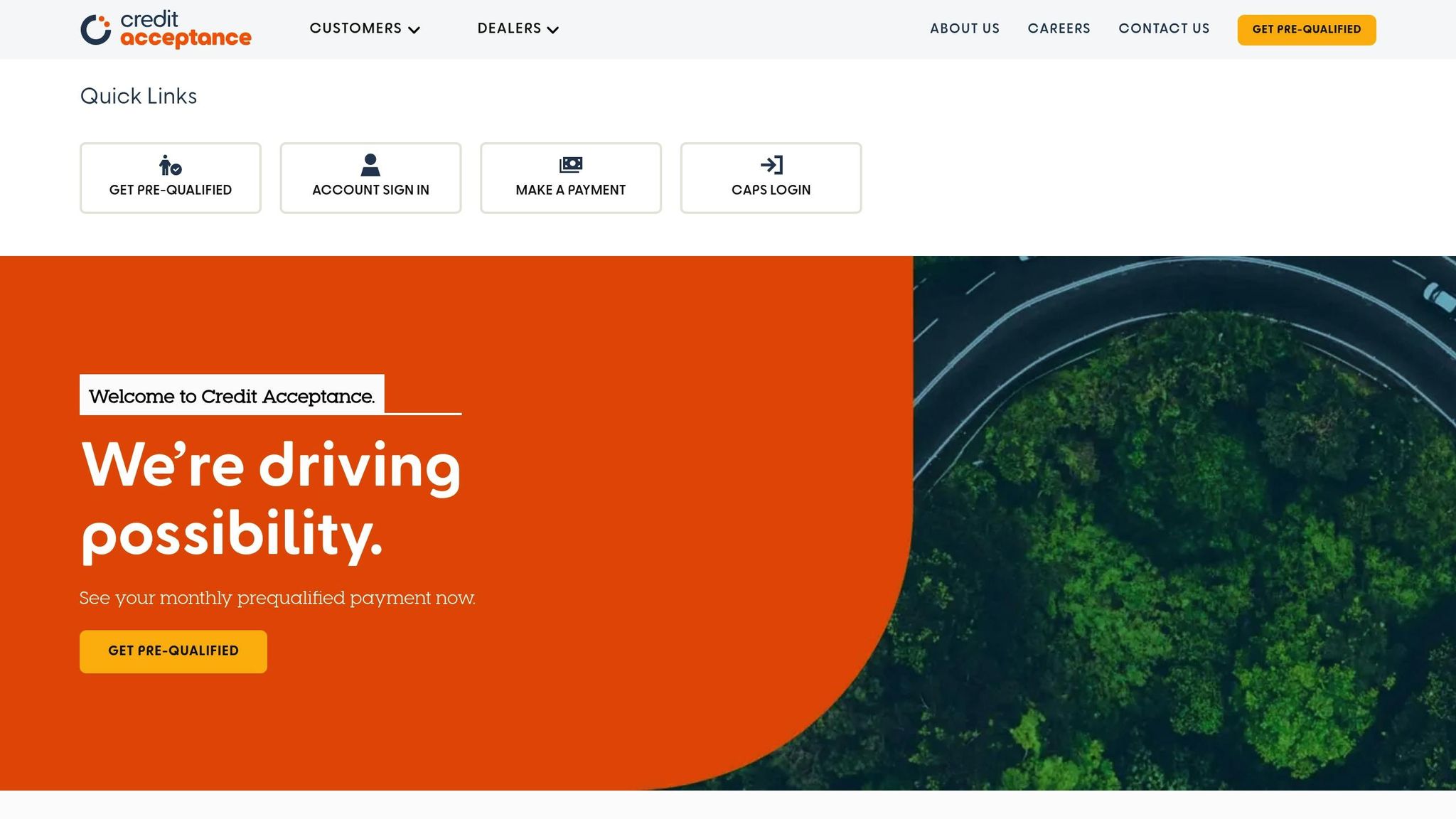
Credit Acceptance Corp. provides subprime auto lending solutions through its indirect Portfolio and Purchase programs, helping dealerships cater to buyers with less-than-perfect credit. By offering these programs, dealers can expand their customer base and reach individuals often overlooked by traditional lenders. These programs are available nationwide, making them a flexible option for dealers across the country.
Credit Acceptance keeps its enrollment process straightforward, welcoming independent, franchise, and Buy Here Pay Here (BHPH) dealerships from all 50 states. This inclusivity makes it easier for dealerships to participate and serve a broader range of customers.
For BHPH dealers utilizing Credit Acceptance's eContracting program, funding is processed the same day once the complete electronic contract package and required funding proofs are submitted. This quick turnaround helps dealers avoid the challenges and costs associated with traditional credit lines.

Dealerhop is an online lending platform designed to simplify the financing process for auto dealerships. By leveraging digital tools, it allows dealers to submit applications and upload required documents online, offering a more streamlined experience compared to traditional banks. This shift to a digital-first approach is part of a broader movement toward faster and more accessible financing options in the industry.
To qualify for Dealerhop's services, dealers need to provide basic business and financial information. This data helps verify their operational status during the initial digital review, ensuring a smooth and efficient eligibility process.
While Dealerhop emphasizes a streamlined application process, specific funding timelines aren’t disclosed. However, its digital-first model often leads to faster decisions compared to traditional banks, which can be a significant advantage when funding is needed urgently. It’s worth noting that quicker processing may sometimes come with higher interest rates.
Dealerhop’s online system is particularly helpful for dealerships facing cash flow challenges. When considering this option, dealers should carefully evaluate whether the benefits of a digital and expedited process align with their broader financial goals and strategies.

LoanConnect provides a peer-to-peer lending platform designed to link auto dealers directly with investors. This approach opens up financing opportunities that go beyond the usual bank loans or online lending services. By using this model, dealerships can establish direct connections with investors, creating a more flexible financing alternative. However, specific details like interest rates, repayment terms, and funding timelines are not readily available due to limited data.
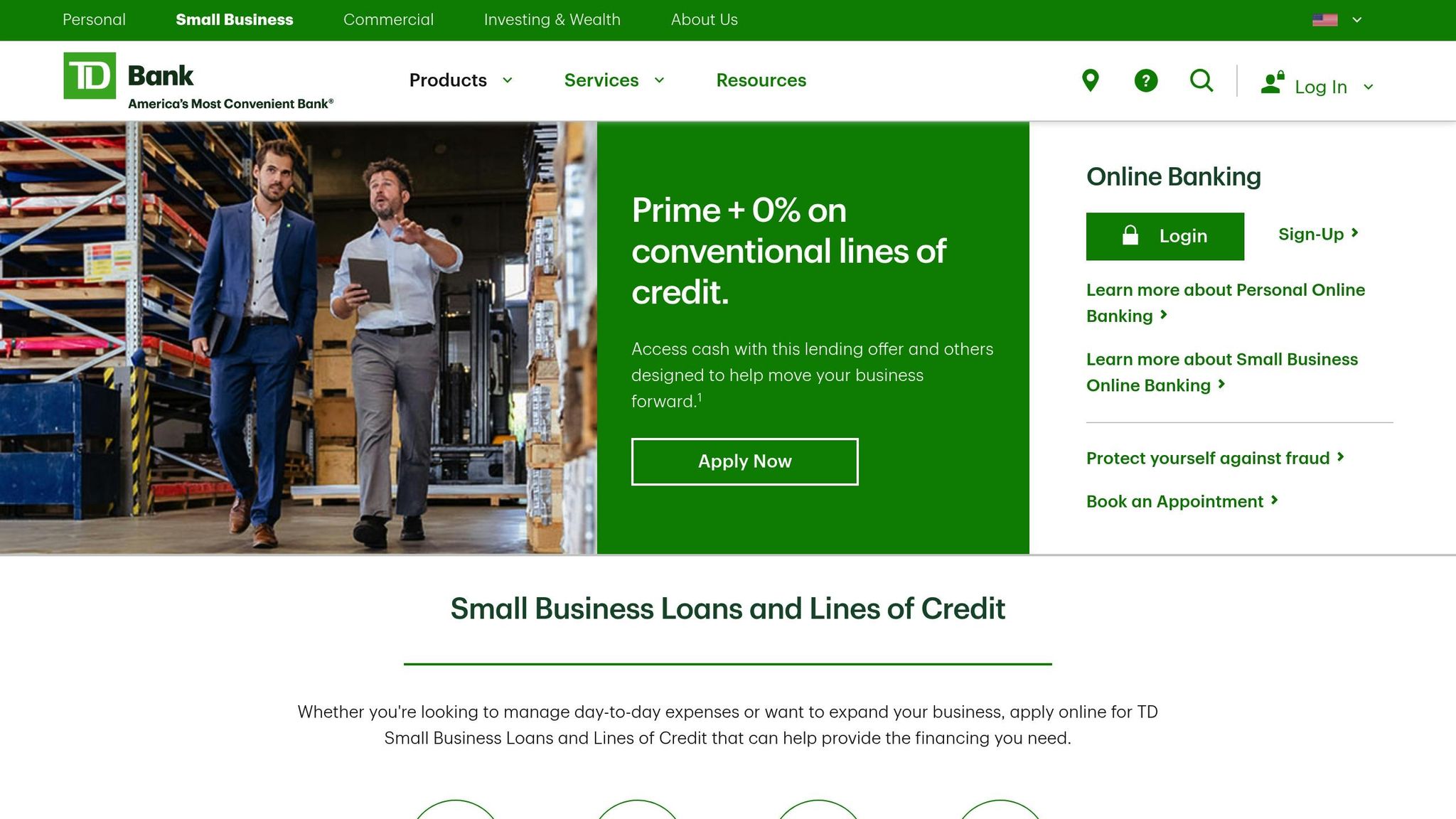
TD Bank offers short-term loans designed to provide dealerships with the working capital they need for inventory purchases, operational expenses, or to bridge payment gaps. These loans aim to ensure businesses have the funds they need to keep things running smoothly.
The interest rates for these loans are determined by factors like the dealership's credit history, financial performance, and overall creditworthiness. This tailored approach ensures businesses receive rates that align with their financial standing and repayment capabilities.
Repayment plans are designed to align with a dealership's sales cycles. Options include fixed repayment schedules or seasonal plans, giving businesses flexibility. Plus, there are no penalties if you decide to pay off your loan early.
To qualify, businesses need to demonstrate a solid operating history and consistent revenue. Required documents typically include financial statements and tax returns to verify financial stability.
TD Bank has a streamlined approval and funding process, allowing businesses to access working capital quickly when they need it most.
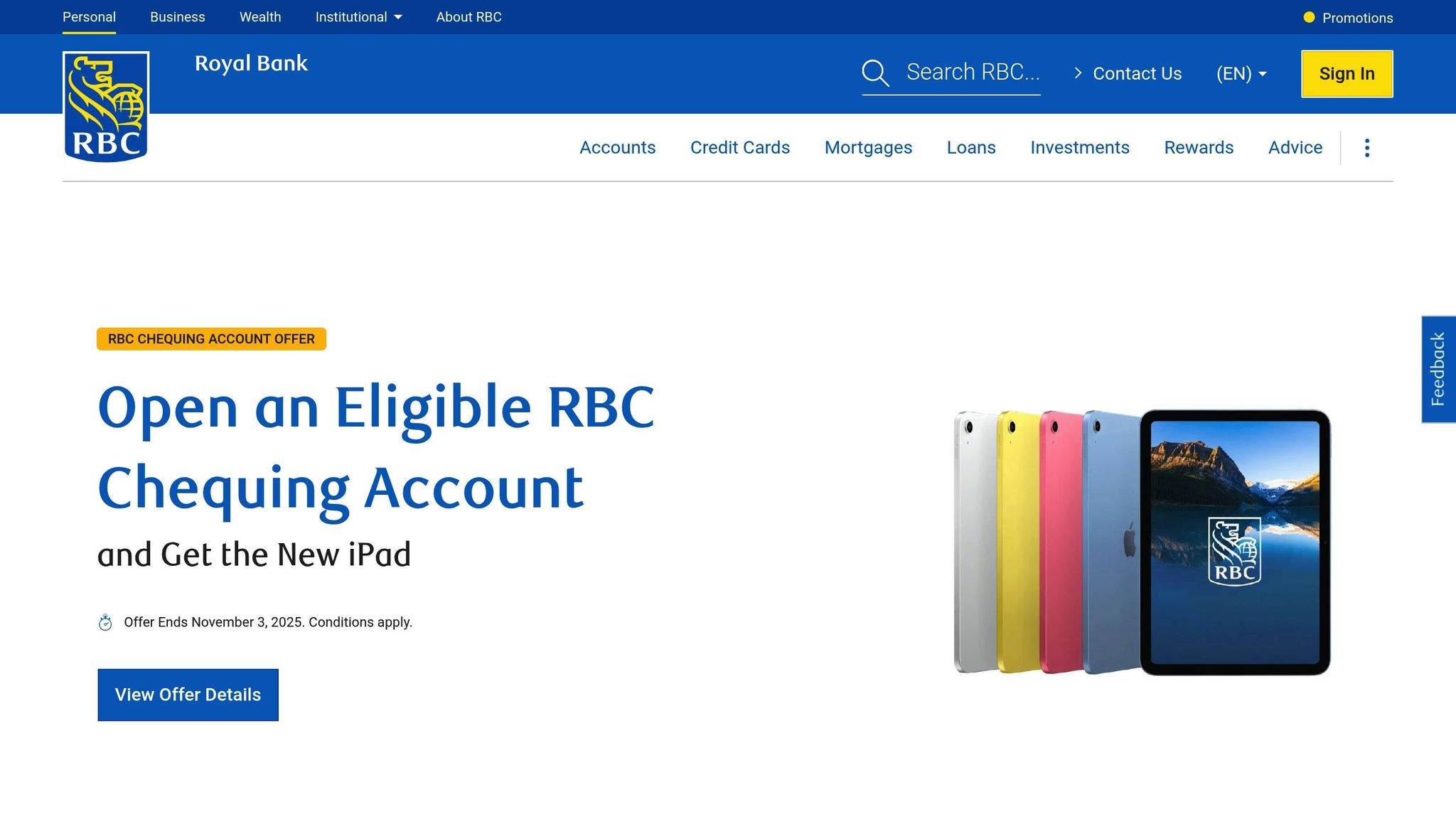
RBC Royal Bank provides a flexible financing option through its lines of credit, tailored to support dealerships in managing cash flow and inventory demands. This type of funding allows dealerships to access funds as needed, offering adaptability to meet changing financial requirements. Details such as interest rates, repayment terms, approval processes, and funding timelines depend on the dealership's financial situation and RBC Royal Bank's current lending policies. For the most accurate and up-to-date information, it's best to reach out to RBC Royal Bank directly.
When weighing financing options, it's essential to understand the pros and cons of each choice to determine what best aligns with your business needs. Here's a breakdown of some common options:
Floor plan financing allows you to purchase inventory without draining your working capital. However, you'll accrue interest on unsold stock, which can add up over time.
Working capital loans provide flexibility for managing operations or seasonal demands. They do, however, require a strong credit profile and may come with variable interest rates, which could affect your repayment amounts.
SBA loans are known for their competitive rates and favorable terms, making them ideal for long-term investments. That said, the approval process can be lengthy and requires extensive documentation.
Equipment financing lets you spread the cost of major purchases over time, using the equipment itself as collateral. The downside? There may be restrictions on how you can use the equipment.
Inventory credit lines offer flexibility by letting you draw funds as needed, which can help with cash flow during slower periods. On the flip side, these credit lines often carry higher interest rates, and each withdrawal reduces your available credit.
Alternative financing options cater to businesses with less-than-perfect credit. While they provide access to funds, they typically come with higher interest rates and shorter repayment periods.
Online lending platforms simplify the application process and speed up funding. Similarly, peer-to-peer lending can offer competitive rates for those who qualify, although funding amounts may be limited.
Short-term business loans provide quick access to cash but come with shorter repayment schedules that can strain your cash flow. Lines of credit offer flexibility since you only borrow when needed, but they often require ongoing financial monitoring and may include extra fees.
It's also worth noting that rising financing costs can significantly impact profitability. High-interest expenses can eat into margins and limit your ability to reinvest in your business.
Lastly, portfolio sales - selling your loan portfolio for immediate capital - can reduce interest expenses and free up cash for inventory or growth opportunities. Balancing traditional financing with strategic portfolio management can help you navigate these challenges effectively.
For BHPH dealers looking to address funding challenges, selling loan portfolios can be a quick and effective solution. Instead of relying solely on traditional loans, portfolio sales allow dealers to turn their loan assets into immediate cash, helping to alleviate liquidity issues that might otherwise slow down growth.
Debexpert offers an online platform that connects sellers with banks and private investors interested in purchasing auto note portfolios. Through this platform, dealers can secure cash funding in as little as seven days. This approach provides a faster and often more cost-effective alternative to conventional financing options.
Choosing the right financing option can make a big difference in your business's growth trajectory. Whether it’s floor plan financing, short-term loans, or lines of credit, each option is designed to meet specific needs like funding inventory or covering working capital. The key is to match your business goals with the lender’s terms.
Traditional lenders often offer lower rates, but they usually require extensive paperwork and take longer to approve loans. SBA loans come with attractive interest rates but involve strict qualifications and lengthy processing times. On the other hand, alternative lenders and online platforms provide faster access to funds, though their rates are typically higher.
It’s essential to pick the financing option that aligns with your business needs. For inventory funding, floor plan financing is a solid choice. Equipment loans are better suited for purchasing machinery, offering more favorable terms than general business loans. And for flexibility in managing day-to-day expenses, lines of credit are an excellent solution.
If traditional financing is straining your cash flow, there are ways to free up resources. High-interest credit lines, for example, can eat into your budget, making it hard to invest in inventory or expand operations. Selling your loan portfolio through platforms like Debexpert can provide an immediate cash boost, helping you pay off high-interest debt and redirect funds toward growth. This approach can help you take control of your dealership’s finances and set the stage for long-term success.
Floor plan financing is a type of revolving credit line created specifically for auto dealerships to help them purchase vehicles. It enables dealers to finance their inventory while only paying interest on the funds they actually use. This financing is closely linked to how quickly a dealership turns over its inventory and often includes perks that motivate quicker sales.
On the other hand, inventory credit lines are more versatile. They can be used for a range of business needs, not just for buying inventory. While they can assist with vehicle purchases, they’re not as narrowly focused on inventory management as floor plan financing.
To put it simply, floor plan financing is designed to handle vehicle inventory, whereas inventory credit lines provide broader financial options for dealership operations.
Selling a loan portfolio offers BHPH dealers a quick way to gain access to cash by turning their current loans into immediate funds. This influx of capital can be used to tackle high-interest floorplan loans or other expensive financing options, helping to reduce debt and free up working capital.
By cutting down on high-interest liabilities, dealers can ease financial pressures, improve cash flow, and allocate resources to purchase new inventory. This approach not only strengthens financial stability but also boosts profitability and provides the flexibility needed to support future growth.
When choosing between traditional lenders and online financing options, auto dealers should consider key factors like speed, convenience, and flexibility. Online lenders often stand out for their quick approval processes and fully digital platforms, making them a great choice if you need funds in a hurry. Plus, their transparent fee structures and easy rate comparisons can simplify decision-making.
Meanwhile, traditional lenders - such as banks and credit unions - tend to offer lower interest rates and a more personalized approach. However, they usually come with stricter qualification criteria and longer approval times. The right option for your dealership will depend on your priorities: whether you need fast, hassle-free funding or prefer lower costs and tailored service.
